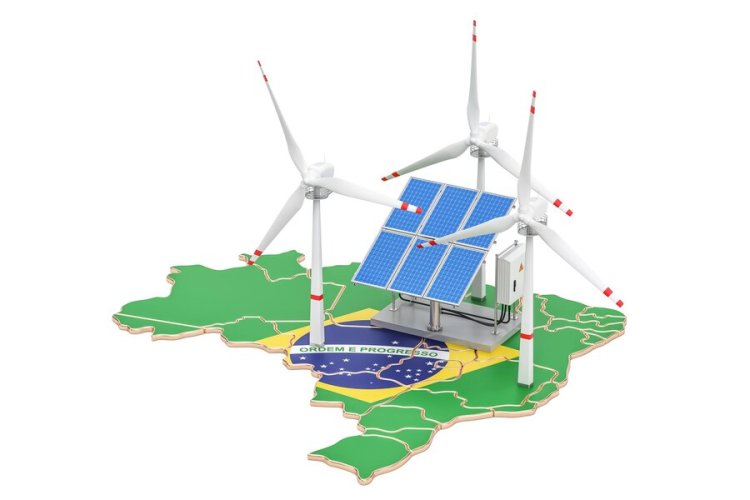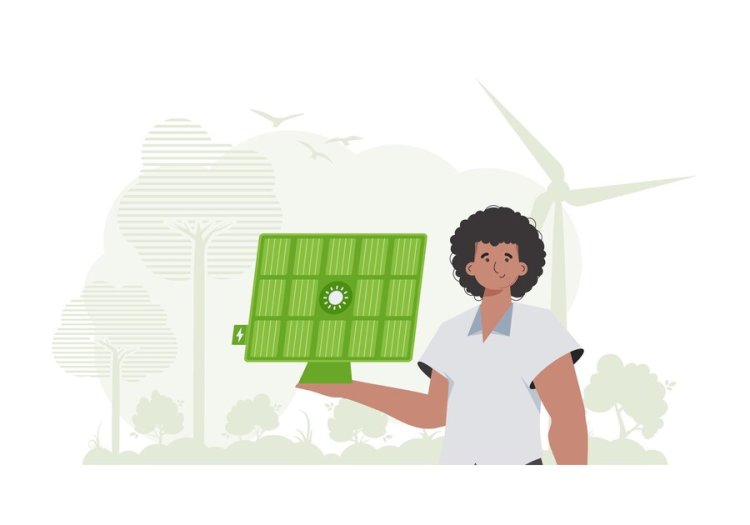What Are the Biggest Challenges in Integrating Renewable Energy Into Existing Grids?
Discover how technology drives renewable energy integration, solving challenges and paving the way for a sustainable energy future.
Share this Post to earn Money ( Upto ₹100 per 1000 Views )

Greetings, readers of WikiGlitz!
Imagine a world powered by clean energy—free from the pollution of fossil fuels and abundant with sustainable resources.
This vision is becoming a reality as renewable energy sources like solar, wind, and hydropower take center stage.
However, the transition is far from seamless. Integrating renewable energy into existing grids presents unique challenges that must be overcome to unlock its full potential.
From technical limitations to economic barriers, these obstacles demand innovative and collaborative solutions.
Below, we’ll dive deep into the most pressing challenges, potential solutions, and the role of sustainable technology innovations in transforming energy systems.

Major Challenges in Renewable Energy Integration
1. Intermittency of Renewable Energy Sources
Renewable energy sources such as solar and wind depend heavily on environmental conditions. The sun doesn’t always shine, and the wind doesn’t always blow. This variability makes it difficult to maintain a consistent energy supply, especially in grids designed for constant power from fossil fuel plants.
- Impact: Energy grids face instability during peak demand when renewable sources fail to produce adequate power.
- Solutions: Developing advanced energy storage systems like lithium-ion and flow batteries allows surplus energy generated during optimal conditions to be stored and used later. Additionally, technologies like predictive analytics and weather forecasting can help anticipate energy production patterns, improving reliability.
2. Grid Infrastructure Limitations
Traditional energy grids were built to handle centralized energy production from large power plants. In contrast, renewable energy is often produced in decentralized locations, such as rooftop solar panels and wind farms in remote areas. This misalignment creates challenges in integrating and managing diverse energy inputs.
- Impact: Existing grids cannot efficiently transmit or balance the variable energy flows from renewable sources, leading to energy losses and inefficiencies.
- Solutions: Upgrading grid infrastructure is essential. Smart grids, equipped with sensors and automated systems, can dynamically adjust to energy input and output. Distributed energy resources (DERs) like microgrids can also decentralize energy management, enhancing overall grid efficiency.
3. Energy Storage Challenges
One critical requirement for renewable energy integration is large-scale storage. Without adequate storage solutions, surplus energy during peak production periods goes to waste, while demand surges during low production periods remain unmet.
- Impact: The lack of storage systems leads to wasted resources and unreliable power supply.
- Solutions: Advances in sustainable technology innovations are vital here. HTo address these gaps, high-capacitybatteries, pumped hydro storage, and emerging technologies like hydrogen fuel cells are being developed These solutions aim to store energy more efficiently, making it available whenever needed.
4. Policy and Regulatory Barriers
Energy policies and regulations often lag behind technological advancements. Outdated policies can hinder renewable energy projects, limiting their ability to connect to the grid or compete fairly with fossil fuel-based energy.
- Impact: Renewable energy developers face bureaucratic delays, financial constraints, and a lack of incentives, slowing the pace of adoption.
- Solutions: Governments and policymakers must introduce supportive regulations and incentives. Feed-in tariffs, tax breaks for renewable energy investments, and streamlined approval processes for projects can accelerate adoption. International collaboration can also promote standardized policies for global impact.
5. High Upfront Costs and Investment Needs
Although renewable energy technologies are becoming more affordable, the initial costs of setting up solar farms, wind turbines, and associated grid upgrades remain high. These expenses can deter governments, businesses, and individuals from making the shift.
- Impact: High upfront investments discourage widespread adoption, particularly in developing countries where budgets are limited.
- Solutions: Public-private partnerships can bridge funding gaps. Additionally, scaling up production of renewable technologies can reduce costs through economies of scale. Subsidies and low-interest loans can also help make renewable energy accessible to more communities.
6. Public Awareness and Acceptance
While renewable energy has gained popularity, many individuals and communities are still unaware of its benefits or skeptical of its reliability. This lack of understanding can lead to resistance, particularly when renewable energy projects require land use changes or significant infrastructure developments.
- Impact: Delayed or canceled projects due to local opposition and slow adoption of renewable energy solutions at the individual level.
- Solutions: Educational campaigns and community engagement are essential. Showcasing success stories and the long-term benefits of renewable energy can build public trust and encourage participation. Involving communities in decision-making processes for local projects can also improve acceptance.
How Sustainable Technology Innovations Are Paving the Way
The challenges outlined above are daunting but not insurmountable, thanks to sustainable technology innovations. These advancements are transforming the energy landscape in several ways:
- AI and Machine Learning: These technologies optimize grid operations by forecasting demand and managing energy distribution in real time.
- Advanced Battery Storage: Innovations like solid-state batteries and flow batteries are increasing storage capacity and reducing costs.
- Smart Grids: Integrated technologies in smart grids improve efficiency, reduce energy losses, and enable seamless integration of renewable sources.
- Decentralized Systems: Microgrids and community-based energy systems empower local areas to generate and manage their own renewable energy, reducing reliance on traditional grids.
These innovations highlight the role of technology in overcoming the challenges of renewable energy integration.
Why Addressing These Challenges Matters
Transitioning to renewable energy is not just an environmental necessity; it’s an opportunity to reshape \he global energy landscape. Overcoming these challenges will lead to:
- Reduced Carbon Emissions: Clean energy reduces the greenhouse gases responsible for climate change.
- Energy Equity: Decentralized renewables can provide electricity to underserved communities worldwide.
- Economic Growth: Investments in renewable energy create jobs in manufacturing, installation, maintenance, and innovation.
- Resilient Grids: Modern grids are less vulnerable to outages and disruptions, ensuring stable energy supplies even during crises.
Powering a Sustainable Future
At WikiGlitz, we believe that tackling these challenges requires a collective effort.
Governments, industries, and individuals all have a role to play in making renewable energy integration successful.
Whether it’s adopting solar panels, advocating for clean energy policies, or supporting technological innovations, every contribution counts.
Let’s work together to address these challenges and pave the way for a cleaner, more sustainable future powered by renewable energy.
Share this article to inspire action and spark change—because the journey to a greener tomorrow starts today.
READ THE FULL ARTICLE
















